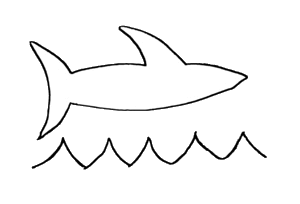PM> Install-Package CsQueryUpdate 11/29/2011 - still more features, tests, and so on. The project is nearing release: see new post.
Update 8/2/2011 - more features added, read what's new.
Original Post Below - Contains Outdated Information!
Get CsQuery now on github.
I began this project some time ago as part of a CMS "plug-in" I had developed for an ASP.NET site. That is, the legacy site was in a custom (non-CMS framework) and I was sick of maintaining content, so I developed a quick and dirty CMS around CKEditor.
As a side note about that, in some fantasy world where I have any free time, I look forward to cleaning it up, adding some important security features, and creating a drop-in CMS for any web site - rather than having to use a CMS framework first and developing your site around it. That world is not here today unfortunately.
Anyway - as the content evolved and became more complex, I had to find a way to "activate" it so it could include form controls, postback links, and so on, that would all work within the context of an ASP.NET web site that knew nothing about those HTML content blocks. I had to search for certain tags, change attributes/values, and so on.
This was starting to sound a lot like client-side life with jQuery. I considered using the HTML Agility Pack to parse and deal with the HTML, which I am sure would have done the job just fine - but I had already written a simple HTML parser some time ago for another purpose, and I thought it would be fun to make something that acted like jQuery rather than learning a new, possibly complex piece of software. I am sure I didn't save any time by doing this, but having a good jQuery implementation in C# would open up a lot of possibilities for unifying server and client logic in a web site architecture. So I proceeded.
It's now stable and while certainly not complete, implements many of jQuery's most used features. What's great about it is that you already know how to use it. The syntax is identical with a few exceptions.
Creating a new DOM:
var csq = CsQuery.Create("<html> ... </html>")
Selecting:csq.Select("selector");
Chaining:// Select the 3rd div, and add markup before it
csq.Select("div").Eq(2).Before("<span>Hello!</span>");
Change something:// Select the 3rd div, and add markup before it
csq.Select("#error_message").Html("You haven't selected anything.");
Replace an entire ASP.NET WebForms page with pure HTML and CSQuery:// no other methods are needed in codebehind. There is no need to use server controls,
// you can access and manipulate everything with CsQuery.
protected override void Render(HtmlTextWriter writer)
{
Dom = new CsQuery();
// use included "server" plug-in to obtain HTML from the "render" method
Dom.Server().CreateFromRender(base.Render,writer);
// Updates dom with values from postback data
if (Page.IsPostBack) {
Dom.Server().RestorePost();
}
// Now, manipulate "Dom" to your heart's content just as you would on the client with jQuery
...
//
// When done, output it
Dom.Server().Render();
}
Selectors:tagname
.class
#id
[attr] attribute exists
[attr="value"] attribute equals
[attr^="value"] attribute starts with
[attr*="value"] attribute contains
[attr~="value"] attribute contains word
[attr!="value"] attribute not equal (nor does not exist)
[attr$="value"] attribute ends with
:button type="button" or <button>
:checkbox type="checkbox"
:text type="text"
:file type="file"
:checked checked
:selected
:contains
:disabled
:enabled
:first
:last
:eq(n) nth matching result
:gt(n)
:lt(n)
:even
:odd
:has(selector) returns elements that have descendants matching the subselector
selectorA, selectorB cumulative selector
selectorA selectorB descendant selector
selecotrA > selectorB child selector
Methods:jQuery (create new jQuery object from existing object, HTML, or DOM element(s))
Add
AddClass
Append
AppendTo
Attr
Before
Children
Clone
Closest
Contents
Css
Data
Each (uses delegates - can pass a function delegate or anonymous function)
Eq
Extend (see update 8/2 for details on how this works in C#)
Find
Filter
First
Get
Height
Hide
Html
Index (partial)
InsertAfter
InsertBefore
Is
Last
Next
Parent
ParseJSON
Prev
Prop
Remove
RemoveAttr
RemoveClass
RemoveData
ReplaceWith
Show
Text
Val
Width
There's a growing test suite which is now part of the github project! It includes a bunch of new tests, plus a growing number migrated from the real jQuery test suite.
